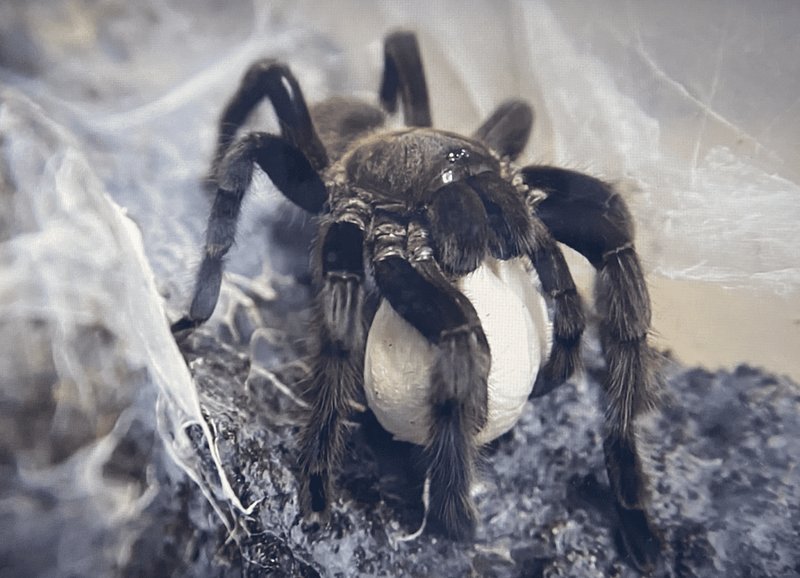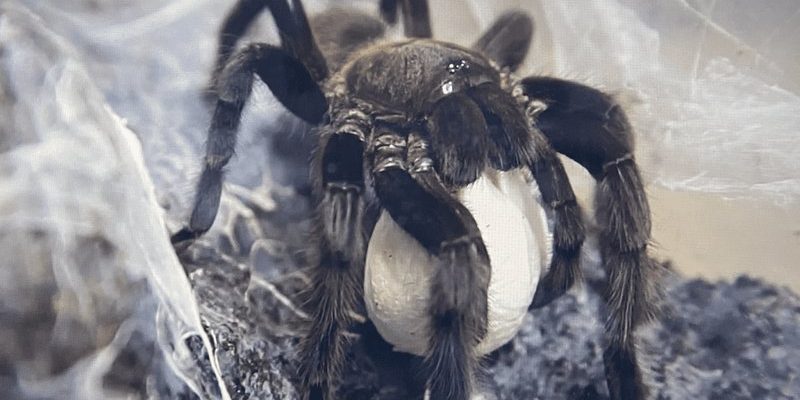
Just like a good cup of coffee brews over time, a Brazilian Black Tarantula’s life unfolds in various stages. They start as tiny spiderlings and can live for years if cared for properly. Let’s break down what you need to know about their lifespan, growth, and some important factors to keep in mind if you’re considering welcoming one into your home.
Understanding the Lifespan of Brazilian Black Tarantulas
When it comes to the lifespan of a Brazilian Black Tarantula, it’s important to note that these spiders have different life expectancies based on their sex. Female tarantulas tend to live much longer than males. In a nutshell:
- Female Brazilian Black Tarantulas: They can live anywhere from 15 to 20 years. Yes, you read that right! These ladies can be around for quite a long time, making them a long-term commitment.
- Male Brazilian Black Tarantulas: They typically don’t live as long, with an average lifespan of about 5 to 10 years. You might notice they tend to mature and mate faster, which is why their time is shorter.
So, if you’re looking for a pet that you won’t have to replace every few years, a female Brazilian Black Tarantula might be the way to go. But don’t forget that, regardless of their gender, proper care is key to helping your spider thrive.
Factors Affecting Lifespan
You might be wondering what influences how long a Brazilian Black Tarantula lives. Several factors play a role in their longevity, and understanding these can help you provide the best care:
- Habitat: Creating a suitable enclosure is vital. They thrive in environments that mimic their natural habitat. This includes warm temperatures and appropriate humidity levels.
- Diet: Feeding your tarantula a balanced diet of crickets, roaches, and occasional treats can help them grow healthy and live longer. A well-fed tarantula is a happy tarantula!
- Stress Levels: Just like us, tarantulas can get stressed out, which can impact their health. A calm, stable environment helps them feel secure.
If you set up the right environment and pay attention to these factors, your Brazilian Black Tarantula will have a better shot at living a healthy, long life.
The Growth Stages of Brazilian Black Tarantulas
Let’s talk about how Brazilian Black Tarantulas grow! They go through different stages in their life, and understanding these can help you as a pet owner.
From Spiderling to Adult
When they hatch, Brazilian Black Tarantulas are called spiderlings, and they are just about the size of a dime. During this early stage, they grow rapidly, molting several times a year. Here’s a quick overview of their growth stages:
- Spiderlings: Right after hatching, they are vulnerable, requiring careful handling and specific humidity levels.
- Juveniles: As they grow, they become more resilient and need larger enclosures. They continue to molt frequently.
- Adults: Once they reach adulthood, they’ll start to slow down in growth. At this stage, females are significantly larger than males.
Watching a tarantula grow can be an amazing experience. As they develop from tiny spiderlings to magnificent adults, you might find yourself feeling a sense of pride in your care.
Caring for Your Brazilian Black Tarantula
Taking care of a Brazilian Black Tarantula is a bit like nurturing a delicate flower; you want to ensure that they have everything they need to flourish. Here are some care tips to keep in mind:
- Enclosure: A terrarium with proper ventilation is ideal. Make sure it’s secure because these spiders can be escape artists!
- Substrate: Use a substrate that retains moisture, like coconut fiber. This mimics their natural habitat and helps with humidity.
- Temperature and Humidity: Keep the temperature around 75-80°F (24-27°C) and humidity between 60-70% for optimal health.
When you care for your tarantula properly, you foster a good environment for them to thrive and potentially live a longer life.
Common Health Issues
Even the hardiest of pets can face health challenges. With Brazilian Black Tarantulas, being proactive about their health can make a significant difference. Here are some common issues:
- Mold: If the enclosure is too humid, you might notice mold growth. This isn’t just unsightly; it can harm your spider. It’s essential to monitor humidity levels carefully.
- Stress: Overhandling or frequent disturbances can stress your tarantula. Allow them to acclimate to their environment and handle them sparingly.
- Molting Problems: Sometimes, molting can go wrong, especially if the humidity isn’t right. Watch for signs like lethargy or incomplete molts.
By keeping an eye on your Brazilian Black Tarantula’s health and environment, you can minimize these risks and enhance their quality of life.
So, how long does a Brazilian Black Tarantula live? With proper care, females can reach 15 to 20 years, while males typically last about 5 to 10 years. Their lifespan can be influenced by habitat conditions, diet, and stress levels. Watching them grow from tiny spiderlings to majestic adults is a rewarding experience.
If you’re considering bringing one of these fascinating creatures into your home, remember that their needs are as unique as they are! Invest time in learning about their care, and you’ll not only enjoy their company for years to come, but you’ll also become part of their amazing journey. Happy tarantula keeping!

